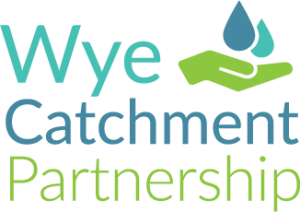Friday 7th October, 2022
Reductions in phosphorous have been achieved in the Curl Brook catchment as a result of our project, Go Wild in the Curl.
This project is part of Natural England’s Facilitation Fund and has enabled the collaboration between farmers in the Curl Brook catchment who cover over 70% of the area. Its aim is to improve the natural environment at a catchment scale. As a tributary, the Curl Brook is teeming with wildlife. It includes ranunculus; the ever-important keystone plant species, as well as red and amber list birds like skylark, lapwing, tawny owls and dippers. Like the majority of the Lugg’s tributaries, higher than normal phosphorous, sediment and nitrate were recorded and the Curl Brook failed to meet its environmental objectives. The Wye and Usk Foundation has worked with hundreds of farmers in Herefordshire over the years, but this project has enabled us to develop a new approach that secures solutions to more complex issues.
Individual farm surveys were completed in the early stages of this 5-year project which identified opportunities for each holding to improve water quality and to protect and enhance wildlife. Farmers were then supported by our staff to enter Countryside Stewardship Schemes; this would help to enact a number of key measures. For example, at the water’s edge, farmers established grass buffers and fencing to exclude livestock. On farm yards, they diverted the runoff of dirty water and pesticide handling areas which before flowed into the river. Whole farm phosphorous balances were also completed with each farmer. This process increased the awareness of the inputs and outputs of phosphorous on their farms with the aim to identify whether the holding is in excess, balance or deficit based on its production needs.
The group’s members have met 28 times since its inception in 2016; meetings provided invaluable learning opportunities and peer-to-peer engagement on a range of topics. These included soil health, nutrient management, yard infrastructure, natural capital, achieving net zero and tree planting. These regular meetings have proven imperative to the success of this project by maintaining momentum and keeping members engaged.
The ongoing facilitation by our Catchment Advisor, Lucinda, alongside the cooperation and enthusiasm of the 26 farm members, has resulted in a reduction in phosphorous levels in the Curl Brook, on average, by 20%. Farmers have had an incredible cumulative impact; delivering benefits for wildlife, sequestering carbon, tackling invasive species, and engaging local school children and communities. For that, we thank everyone involved with special credit given to the group founder, Tony Norman. His passion was the catalyst for the group being formed and he has continued to play an integral role throughout the project, braving all weathers to carry out water monitoring and enthusing volunteers to pull Himalayan balsam.
The approach of this project has proven to be effective for the Foundation, the participating farmers and the river. Once funding can be secured, we aim to deliver this in all our other failing waterbodies, working stream by stream to secure long-term improvements to water quality and wildlife.



